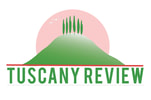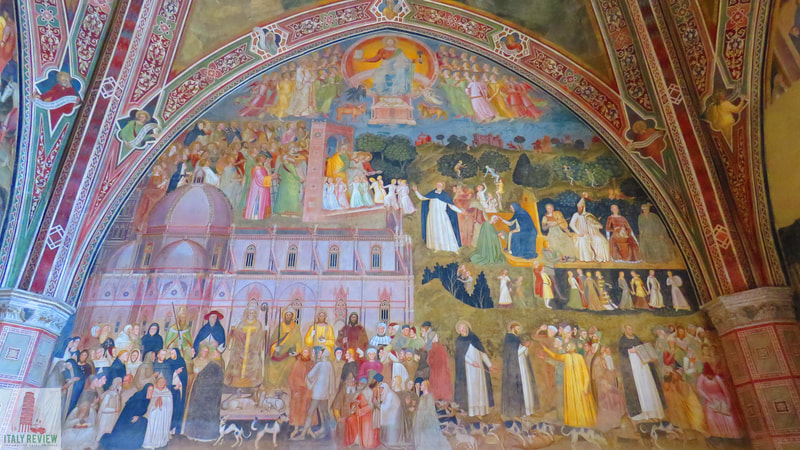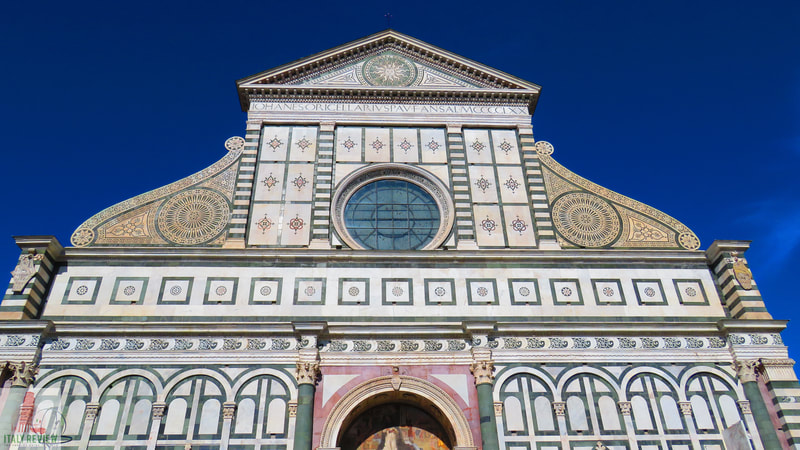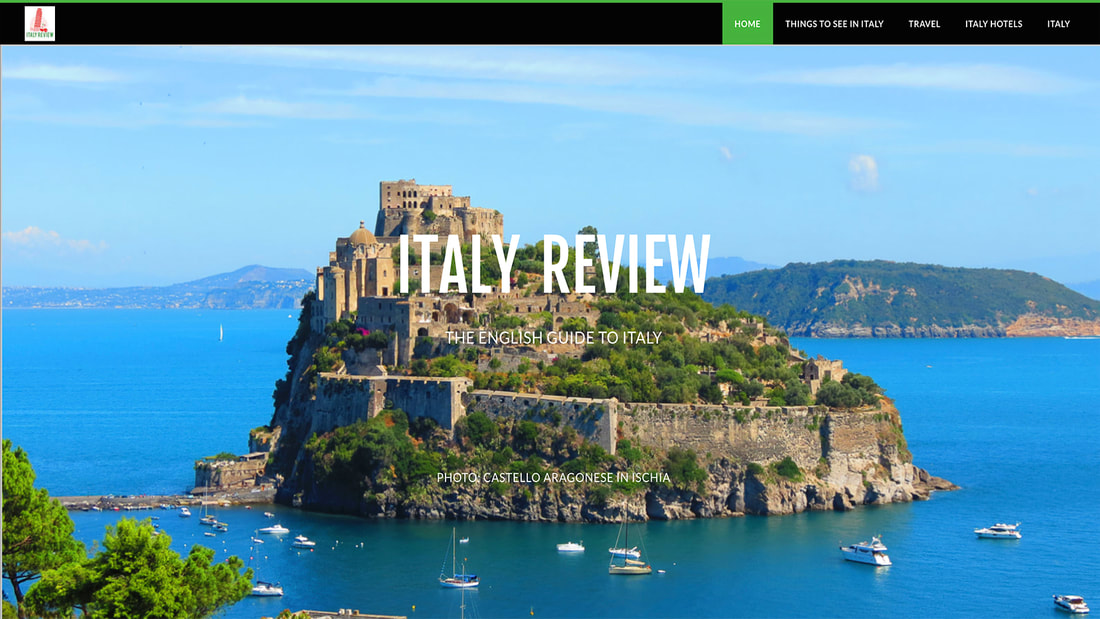Basilica di Santa Maria Novella
Latest update: 18 February 2024
|
From the very first glance, the Basilica di Santa Maria Novella in Florence creates an overwhelming sense of awe.
That first impression comes from its massive façade which is decorated with beautiful Serpentino (green marble of Prato) arrangements designed by Leon Battista Alberti who was also the architect of the Tempio Malatestiano in Rimini, Emilia Romagna. |
|
Related links
Centre for the Dominicans in Tuscany
The 100 metre long nave and the massive columns that resemble the Roman classical style continue to tease the eye but the Basilica's importance goes beyond that; for centuries, this has actually been the most important centre for the Dominicans in Tuscany and it is also an essential piece of Florentine Renaissance work.
One of the most important works that it houses is Masaccio’s Holy Trinity; the effect of depth that it immediately offers is only the tip of the iceberg of how its complex use of mathematics and perspective makes this a milestone of Renaissance art.
The 100 metre long nave and the massive columns that resemble the Roman classical style continue to tease the eye but the Basilica's importance goes beyond that; for centuries, this has actually been the most important centre for the Dominicans in Tuscany and it is also an essential piece of Florentine Renaissance work.
One of the most important works that it houses is Masaccio’s Holy Trinity; the effect of depth that it immediately offers is only the tip of the iceberg of how its complex use of mathematics and perspective makes this a milestone of Renaissance art.
Florence Tours
Chapels of the Basilica di Santa Maria Novella
The basilica is divided into several chapels not to miss; look out for the Filippo Strozzi tomb in his homonymous chapel (also with a remarkable series of frescoes by Filippino Lippi) and the frescoes inspired by Dante's Divine Comedy, the Cappella Gondi (with a wooden crucifix by Brunelleschi, said to be a response to the "primitive" crucifix made by Donatello for the Basilica di Santa Croce), the Martyrdom of Saint Catherine by Giuliano Bugiardini in the Cappella Rucellai and the Cappella Bardi with Giorgio Vasari’s Madonna del Rosario on the altar and its frescoes by Spinello Aretino.
The sacristy, at the end of the left aisle, houses works by Giovanni della Robbia, Bernardo Buontalenti and Giorgio Vasari. Also check out the enormous painted crucifix with the Madonna and John the Evangelist, made by Giotto.
The basilica is divided into several chapels not to miss; look out for the Filippo Strozzi tomb in his homonymous chapel (also with a remarkable series of frescoes by Filippino Lippi) and the frescoes inspired by Dante's Divine Comedy, the Cappella Gondi (with a wooden crucifix by Brunelleschi, said to be a response to the "primitive" crucifix made by Donatello for the Basilica di Santa Croce), the Martyrdom of Saint Catherine by Giuliano Bugiardini in the Cappella Rucellai and the Cappella Bardi with Giorgio Vasari’s Madonna del Rosario on the altar and its frescoes by Spinello Aretino.
The sacristy, at the end of the left aisle, houses works by Giovanni della Robbia, Bernardo Buontalenti and Giorgio Vasari. Also check out the enormous painted crucifix with the Madonna and John the Evangelist, made by Giotto.
The Convent
After the church the visit has not finished. Stop by the convent; it is a privilege to have the chance to visit it since it wasn't possible for a long time. The monastery had to be closed during Napoleon's reign in Italy (1805-1814) and when Italy became a country in 1861, it was occupied by Government Offices. A decade later, when Florence stopped being the capital of Italy, the Dominicans regained control of part of the building, but still until 2016 it was used as a military barracks (Caserma Mameli), for training police officers and military officers.
Now, it has doubled its size, as the 4,400 square metres were regained and it's possible to visit it while what will eventually be done with this space is being decided. Since 2017 it's been possible to access the Chiostro Grande (Big Cloister), next to the Chiostro Verde (Green Cloister), so-called due to the colour of Paolo Uccello's frescoes. Also worthy of a visit are the dormitories and the Cappella del Papa (Pope’s Chapel), a chapel used by Pope Leo X, among other popes, in his visit to Florence.
How the 16,000 square metres of new monastery will be utilised is still to be decided, but even Jeff Bezos, founder of Amazon, visited the complex with the mayor of Florence to discuss it.
After the church the visit has not finished. Stop by the convent; it is a privilege to have the chance to visit it since it wasn't possible for a long time. The monastery had to be closed during Napoleon's reign in Italy (1805-1814) and when Italy became a country in 1861, it was occupied by Government Offices. A decade later, when Florence stopped being the capital of Italy, the Dominicans regained control of part of the building, but still until 2016 it was used as a military barracks (Caserma Mameli), for training police officers and military officers.
Now, it has doubled its size, as the 4,400 square metres were regained and it's possible to visit it while what will eventually be done with this space is being decided. Since 2017 it's been possible to access the Chiostro Grande (Big Cloister), next to the Chiostro Verde (Green Cloister), so-called due to the colour of Paolo Uccello's frescoes. Also worthy of a visit are the dormitories and the Cappella del Papa (Pope’s Chapel), a chapel used by Pope Leo X, among other popes, in his visit to Florence.
How the 16,000 square metres of new monastery will be utilised is still to be decided, but even Jeff Bezos, founder of Amazon, visited the complex with the mayor of Florence to discuss it.
Opening times:
|
April to September
Monday-Thursday: 09:00-19:00 Friday: 11:00 -19:00 (last entry at 18:30) September to June Saturday: 09:00 - 17:30 (last entry at 16:45 pm) Sunday and Holidays: 1:00 pm - 5:30 pm (last entry at 4:45 pm) Service times (in italian): Monday to Friday (Cappella della pura): 7:30 (Not in July/August), 18:00 Saturday (Basilica): 18:00 Sunday (Basilica): 10:30 am, 12:00 (Not in July/August), 18:00 |
October to March
Monday-Friday: 09:00 - 17:30 Friday: 11:00 -17:30 (last entry at 16:45) July and August Saturday: 09:00 - 18:30 (last entry at 17:30) Sunday and Holidays: 12:00 - 18:30 (last entry at 17:15) Prices: Adults: €5 Children: €3.50The ticket includes the entrance to the Basilica, the Museum of Santa Maria Novella, the Cloister of the Dead, the Green Cloister, the Spanish Chapel, the Ubriachi Chapel (Chiostro dei Morti, Chiostro Verde, Cappellone degli Spagnoli, Cappella degli Ubriachi) and the Refectory. |
|
City: Florence
Province: Metropolitan City of Florence Region: Tuscany Built: 1246-1360 Architectural style: Romanesque, Gothic, Renaissance Walking distance from Piazza del Duomo: 8 minutes Close by: Piazza Santa Maria Novella, Basilica di San Lorenzo Recommended accommodation: Hotel Spadai |
Directions: When arriving in Florence, just after the square in front of Santa Maria Novella Station, you will see the apse of the basilica. Both the station and the basilica are named Santa Maria Novella (New) because of the site where the church was built by the Dominican Order, the 9th-century oratory of Santa Maria delle Vigne. The entrance, through Piazza della Stazione leads to the Chiostro Grande (large cloister), the Dormitorio inferiore settentrionale (the ex-dorm) and the Cappella del Papa (Pope's Chapel).







